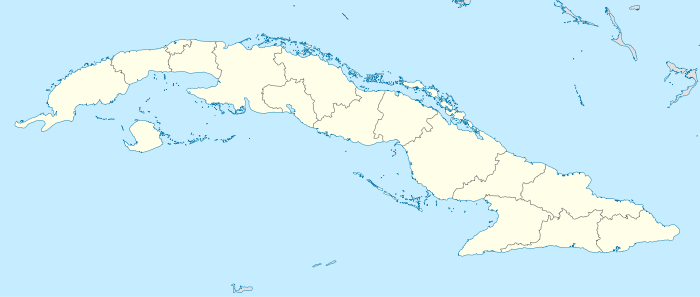MV Empire Bede
| History | |
|---|---|
| Class and type: | Cargo ship |
| Name: | Empire Bede |
| Owner: | Ministry of War Transport |
| Operator: | Hain Steamship Co Ltd |
| Port of registry: |
|
| Builder: | Harland & Wolff Ltd, Glasgow |
| Yard number: | 1094 |
| Launched: | 6 January 1942 |
| Completed: | 31 March 1942 |
| Identification: |
|
| Fate: | Torpedoed, then sunk by gunfire on 18 August 1942 |
| General characteristics | |
| Tonnage: | |
| Length: | 432 ft 7 in (131.85 m) |
| Beam: | 56 ft 3 in (17.15 m) |
| Depth: | 34 ft 3 in (10.44 m) |
| Propulsion: | One 4SCSA oil engine, 490 hp (370 kW) |
| Speed: | 14 knots (26 km/h) |
| Crew: | 37, plus 6 DEMS gunners and 2 signalmen |

Empire Bede was a 6,959 GRT cargo ship which was built by G M Harland & Wolff Ltd, Glasgow in 1942 for the Ministry of War Transport (MoWT). She had a short career, being damaged by a torpedo and then sunk by gunfire on 18 August 1942.
Description
Empire Bede was built by Harland & Wolff Ltd, Glasgow.[1] She was yard number 1049.[2] Empire Bede was launched on 6 January 1942 and completed on 31 March.[2] She was 432 feet 7 inches (131.85 m) long, with a beam of 56 feet 3 inches (17.15 m) and a depth of 34 feet 3 inches (10.44 m).[3] Her GRT was 6,959[1] with a NRT of 4,201.[3]
Career
Empire Bede had a short career, she was a member of two convoys.
- OS 25
Convoy OS 25 departed Liverpool on 12 April 1942 and arrived at Freetown, Sierra Leone on 29 April.[4] Empire Bede was carrying a cargo of ammunition, guns, stores and tanks.[5]
After leaving the convoy off Freetown, Empire Bede delivered her cargo to Aden and Port Said, Egypt. She then sailed to Port Sudan where a load of cotton was taken aboard. Empire Bede sailed to Cape Town and then departed for New York.[5] On 1 August she picked up 25 survivors from the Clan Line ship SS Clan MacNaughton, which had been torpedoed and sunk by U-155. They were landed at Port of Spain, Trinidad on 5 August.[6]
- TAW 13
Convoy TAW 13 departed from Trinidad on 12 August 1942 and arrived at Key West, Florida on 23 August.[7] Empire Bede carried the Vice-Commodore. The convoy headed for the Panama Canal at 5 knots (9.3 km/h) to rendezvous with other ships that were to join the convoy there. At 04:00 British Double Summer Time (06:00 German time) on 12 August,[5] Empire Bede was struck by a torpedo fired by U-553, under the command of Kapitänleutnant Karl Thurmann. Two crew were killed.[8] Her position was 19°35′N 76°25′W / 19.583°N 76.417°W.[1] The other 35 crew, six DEMS gunners and two signalmen were picked up by HMS Pimpernel,[8] which later sank Empire Bede by gunfire at 19°41′N 76°50′W / 19.683°N 76.833°WCoordinates: 19°41′N 76°50′W / 19.683°N 76.833°W.[1] The rescued crew were landed at Santiago de Cuba.[8] Those lost on Empire Bede are commemorated at the Tower Hill Memorial, London.[9]
Official Numbers and Code Letters
Official Numbers were a forerunner to IMO Numbers. Empire Bede had the UK Official Number 1687091 and the Code Letters BCVC.[3]
Propulsion
Empire Bede was propelled by a four-stroke Single Cycle, Single Action diesel engine which had six cylinders of 29 3⁄8 inches (750 mm) diameter by 59 3⁄16 inches (1,503 mm) stroke. It was built by Harland & Wolff.[3] The engine could propel the ship at a speed of 14 knots (26 km/h).[5]
References
- 1 2 3 4 Mitchell, W H, and Sawyer, L A (1995). The Empire Ships. London, New York, Hamburg, Hong Kong: Lloyd's of London Press Ltd. ISBN 1-85044-275-4.
- 1 2 "1168709". Miramar Ship Index. Retrieved 29 October 2009. (subscription required (help)).
- 1 2 3 4 "LLOYD'S REGISTER, STEAMERS & MOTORSHIPS" (PDF). Plimsoll Ship Data. Retrieved 29 October 2009.
- ↑ "Convoy OS.25". Convoyweb. Retrieved 29 October 2009.
- 1 2 3 4 "A Look Back at My Life and Service in the Merchant Navy". BBC. Retrieved 29 October 2009.
- ↑ "August 1st, 1942". Andrew Etherington. Retrieved 29 October 2009.
- ↑ "Convoy TAW.13". Convoyweb. Retrieved 29 October 2009.
- 1 2 3 "Empire Bede". Uboat. Retrieved 29 October 2009.
- ↑ "Ship Index A-F". Brian Watson. Retrieved 20 May 2011.